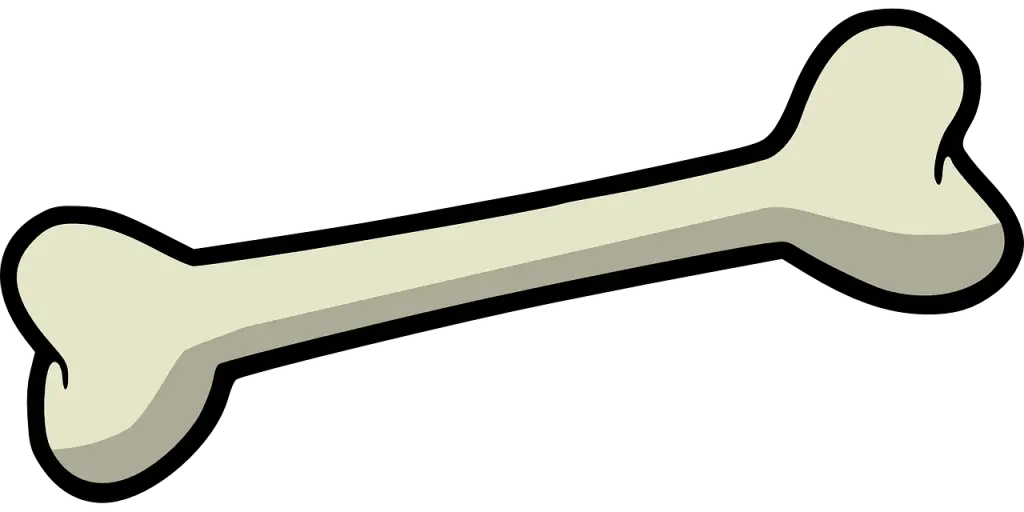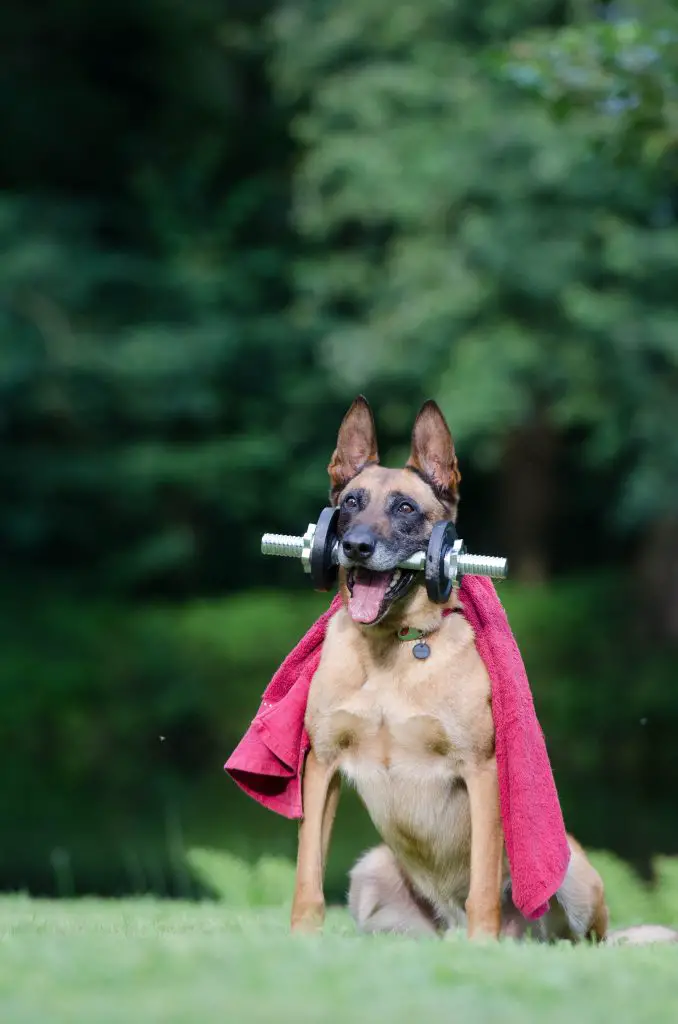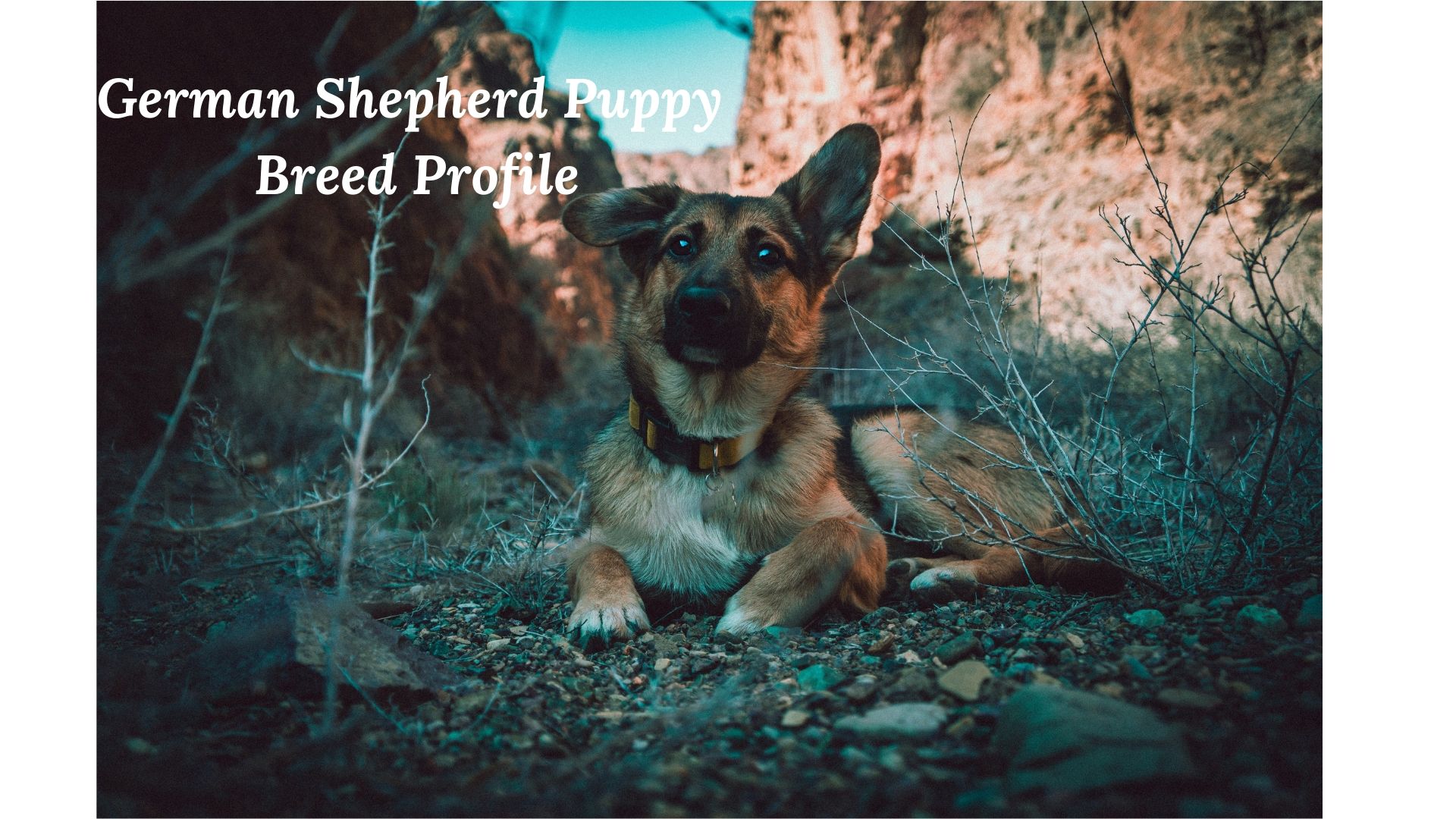Many people should do a very crucial step before they adopt a new puppy, yet they skip it. Can you guess what it is? If you answered research breed profiles, then you win this round! Are you looking for a new loyal friend to join your family and you’re considering a GSD? Then read this German Shepherd puppy breed profile.
Knowing detailed information about any particular breed helps you recognize which dog is suitable for you and which isn’t before adopting the puppy. Adding a GSD to your family has many perks, but life isn’t a bed of roses. Even if you view life through rose-colored glasses, remember that every rose has its thorn.

Table of Contents
German Shepherd Puppy Breed Overview
The German Shepherd dog is one of the most popular dog breeds in the United States. These canines are working dogs because of their intelligence, bravery, and devotion. All of these traits make them shine among the other breeds. Their agility makes them capable of being whatever you train them to be.

German Shepherd dogs are herding dogs; herding dogs are renown for their instinctual ability of controling other animals’ movements. Herding dogs were primarily curated and evolved to gather, protect and herd livestock.
Despite all of these strong traits, german shepherd dogs are great companions. If you have kids, they would be a playmate and a safety guard all at once. Be careful, leaving them alone with toddlers, though. German Shepherd dogs have medium to large sized bodies, so they might accidentally push a toddler down.
- Dog Breed Group: Herding Dogs
- Life Span: Seven to Ten years
- Weight: Sixty-five to ninety pounds
- Height: Twenty-two to Twenty-six inches

German Shepherd Puppy Breed History
Let’s talk about German Sheperd Dog’s breed history. It is surprisingly a very interesting read, so I hope you enjoy it as much as I did.
It all started in Germany
German Shepherd dogs descend from a family of German herding dogs. They varied in type from one district to another up until the nineteenth century. The story begins with a German cavalry officer named Captain Max von Stephanitz.

During the waning years of the eighteen hundreds, Max saw the potentials of German dogs, and wanted to create a breed from them that surpasses their herding nature.
Like the rest of Europe, German farmers used herding dogs to protect and drive their herds, but no one developed the region’s herding dogs into distinct breeds. This is where Captin Max came to the picture and began his journey of breeding a superior German dog breed.
How the journey started
He retired from his military life in 1898 and began pursuing his new passion and second career as a dog breeder. Von Stephanitz learned the British breeding techniques because they excelled in having unprecedented herding dogs.
He traveled across Germany and attended many dog shows in search of the ultimate German herding dogs. Stephanitz saw a lot of British herding dogs; some were intelligent, some were athletic, and others were capable canine.
No dog breed he saw was able to hit the bullseye because there wasn’t any dog who embodied all of these desired traits. But good things come to those who wait and persist, and Stephanitz wasn’t giving up.
Then the awaited day came in 1899 when Stephanitz was visiting a dog show and a wolflike dog captured his attention.
Good things happen for those who wait
The universe finally did its thing, and Stephanitz was smart enough to embrace this golden opportunity; he bought the dog immediately. The dog was primarily named Hektor Linksrhein, then renamed Horand v Grafeth.
The dog’s mindblowing features, which included athletic physique and extreme intelligence, influenced and inspired von Stephanitz to form the Verein fur Deutsche Schaferhunde, which translates to the German Shepherd Association.
This is a society that he created along with his colleague, Arthur Miller, that serves as a breed club that will go on to set the standards of the German Shepherd dog breed with Horand’s descendants.
His initial intentions were to make his breed work as herding dogs, but as the industrialization wave hit Germany, von Stephanitz realized that the need and demand for such dogs were fading away quickly.
GSD continue to be working dogs
However, such obstacles weren’t able to stop such an innovative man, and so Stephanitz was still determined to make his breed continue to be working dogs. He had a keen foresight that his dog breed will be useful in police work and military services.

Von Stephanitz used his military connections and was able to convince the German government to use his breed. And they indeed ended up using his dog breed during World War I, where the German Shepherd served as a messenger, guard, supply carrier, rescuer, and a red cross dog.
Stephanitz remained highly involved with developing his breed. He spent thirty-five years improving and promoting the breed. Unfortunately, von Stephanitz noticed some negative traits, like bad temperament and tooth decay tendencies, in his breed in 1922.
That made him developed a system of rigid quality control tests. Stephanitz tested any German Shepherd dog before they bred for their temperament, intelligence, fitness, and good health. American breeding style of German Shepherds, on the other hand, wasn’t as strongly regulated.
Speaking of American, let us talk about how and when the German Sheperd breed became popular in the United States.
The United States
German Shepherds were already in the United States before the war, but the breed only grew popular during the war. Soldiers noticed the GSD’s intelligence and bravery and took some dogs home with them. But the person who popularised German Shepherd dogs in the United States was an American soldier named Lee Duncan.
Duncan rescued a German Shepherd puppy that was a couple of days old from a bomb-riddled kennel in France. He took the puppy back to Los Angles with him.
He trained the GSD and made him one of the most recognizable animal star in Hollywood. Duncan named him Rin Tin Tin; the GSD appeared in twenty-six movies, which is how this breed was popularized in the United States.

The Allies, which included Britain, France, Russia, Italy, and the United States, were all impressed by the German dogs’ traits. They didn’t like the dog’s German roots, though.
Renaming the breed
Because everything related to Germany was stigmatized, the AKC, American Kennel Club, decided to change the breed’s name from the German Shepherd dog to just the Shepherd Dog. This happened in 1917, and it wasn’t until 1937 that the AKC started using the original name of the GSD again.
While von Stephanitz envision and purpose for his breed was to be more for serving people in jobs like the military, the German Sheperd dogs were bred to win dog shows in the United States.
England also renamed the German breed, naming them the Alsatian Wolf Dogs. They were named after the Alsace-Lorraine, which is the German-French border area. Unlike the AKC, the British Kennel Club waited until 1977 to revert to using the original name of the German Shepherd dog.
The Fall
Post world war II, the divergence between the American- and German-bred German Shepherds occurred dramatically.
It reached the point where the police department of the United States had to import German Shepherd working dogs from Germany because the one’s homegrown in the United States were failing performance tests and suffering from serious genetic health conditions.
This might be why some American breeders in the last couple of decades started focussing more on the breed’s phenomenal capabilities, rather than just their looks.

German Shepherd Puppy Breed Health
GSD is a healthy breed of dogs. An accountable breeder should screen his breeding livestock for health issues such as Degenerative myelopathy, bloating, hip and elbow dysplasia.

Degenerative Myelopathy (DM)
Degenerative myelopathy is an incurable and progressive disease that occurs in the canine spinal. It affects the part of the spinal cord that sends information to the brain about the hind legs.
The disease’s onset time is usually after a dog turns seven years old. It starts with the rear legs becoming progressively weaker, then evolves into complete paralysis. This occurs due to the escalating loss of communication between the nerves in the dog’s lower body and their brain.
Unfortunately, DM is untreatable. Most of the time, euthanasia becomes the only solution. Rarely, the condition is caused due to a lack of vitamin-12 or vitamin E. In this case, the condition might stabilize if the dog takes vitamin supplements.
Bloating
A life-threatening condition that often plagues the German Shepherd breed is Gastric dilation-volvulus (GDV), also known as bloating. Bloating might be nothing but a slight inconvenience to us, but it is fatal in dogs and is considered to be a health emergency that strikes dogs in their prime life.
This is a condition that could cause the entire stomach to rotate, cutting off the blood supply to the stomach.
The bloating is characterized by the sudden swelling of the abdomen. If your GSD shows one of the following symptoms, take them straight to the vet. The symptoms are:
- Abdomen enlargement
- Salivation
- Retching
- Whining and being in pain when their bellies are touched
- Restlessness
The cause is yet to be known, but it often occurs after a dog has eaten a large meal, or drank a huge amount of water after eating or even exercised vigorously after eating.
Hip Dysplasia
This is a hereditary condition where the femur doesn’t fit perfectly into the socket of the hip. With Hip dysplasia, there isn’t always a clinical sign. Some dogs exhibit pain in one or both of the rear legs.
Elbow Dysplasia
This is also a heritable condition that is most common in large breed dogs. It’s probably due to the different growth rates of the three bones found in the dog’s elbow. This leads to joint laxity and makes it painful for the dog to walk.
Depending on the case, the vet might either recommend surgery or prescribe pain medication.

German Shepherd Puppy Breed Care
Exercise
Because of their herding organs, German Shepherd’s have a lot of energy in them that should be burned off with daily exercises. If ignored or not exercised, GSD cause a lot of trouble and display unwanted behavior such as barking and chewing on everything.

German Shepherds need to exercise both their bodies and their minds. Jogging and hiking are great as body exercises, and agility is a great mind exercise, which is a sport that combines skills, training, and human-canine communication.
Grooming
German Shepherds come in different coat types and colors. Some are long-haired, while others have a double coat with medium hair. GSD could be black, yellow, white, or a mix of the previously mentioned colors.
GSD shed a lot, so daily grooming, preferably outdoors, is highly recommended. Only shower them when they get filthy, and trim their nails once every month if they’re not worn out.
If you want to learn how to cut your dog’s nails at home, then click here.
Nutrition
Dog food varies according to the dog’s age, but no matter what their age this, their food should always be high quality. The vet will recommend what type of food is most suitable for your German Shepherd puppy.
Refrain from feeding your dog table scraps, especially cooked bones. It is okay if you do it once upon a blue moon, but don’t turn it into a habit. Check out our Top Tips on Best Dog Food for German Shepherd blog post for more details on nutrition.

German Shepherd Puppy Breed Training
German Shepherd often suffers from separation anxiety and other forms of anxiety when they’re alone. That is why crate training them when they’re puppies is very beneficial because it will train them to be calm when you aren’t around them.
I have posted a How to Crate Train A Dog | The Ultimate Guide blog post, so make sure to check it out. I go into details on what to do and how to do it.
The GSD breed loves barking and chewing, so train them at a young age to stop doing that when you say “Stop.” One more thing you could do is buy many biting toys to redirect your dog from biting anything else. For more information on bite training, read my How to Train A Lab Puppy Efficiently blog post.

Let’s sum up the Pros and Cons of the German Shepherd dog. They’re extremely trainable, agile, loyal, and are great as safety guards. The cons include the possibility of them not getting along with other pets, becoming aggressive if not trained frequently, and their constant shedding.
I hope you now know more about the beloved German Shepherd dogs. Would you adopt a GSD puppy? Let me know why you would or why you wouldn’t in the comments down below.

